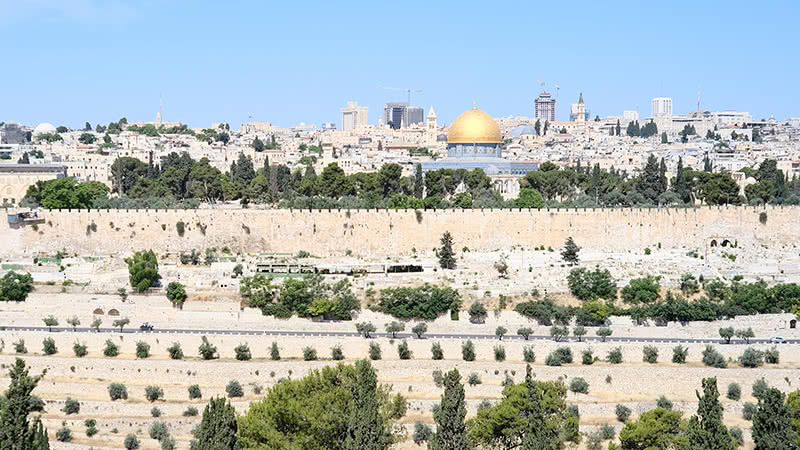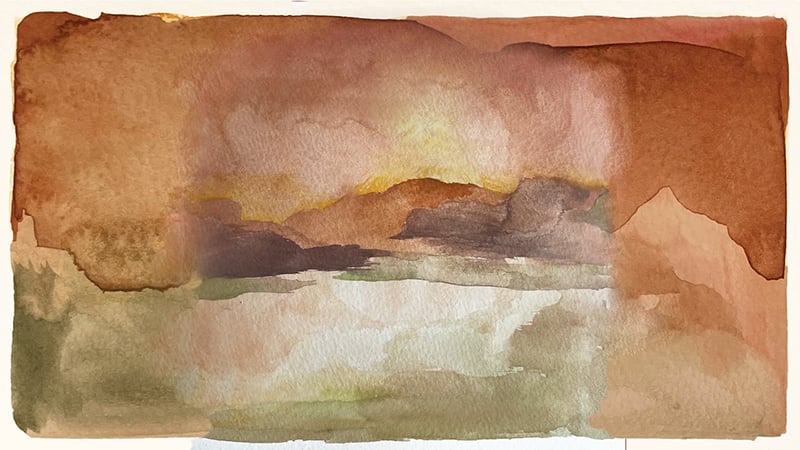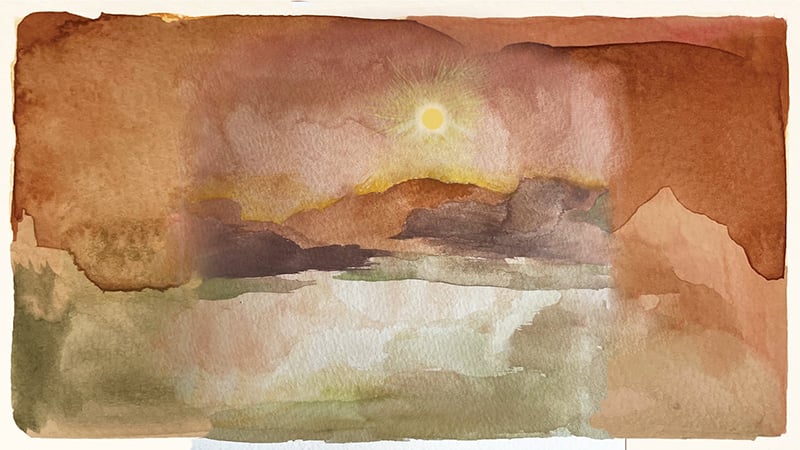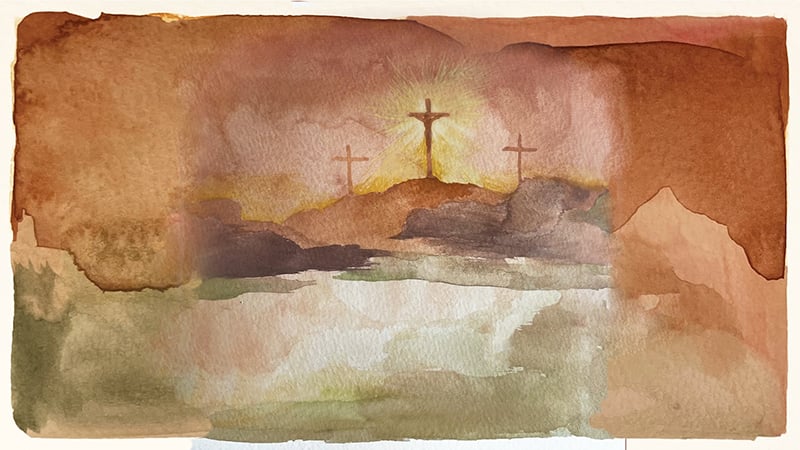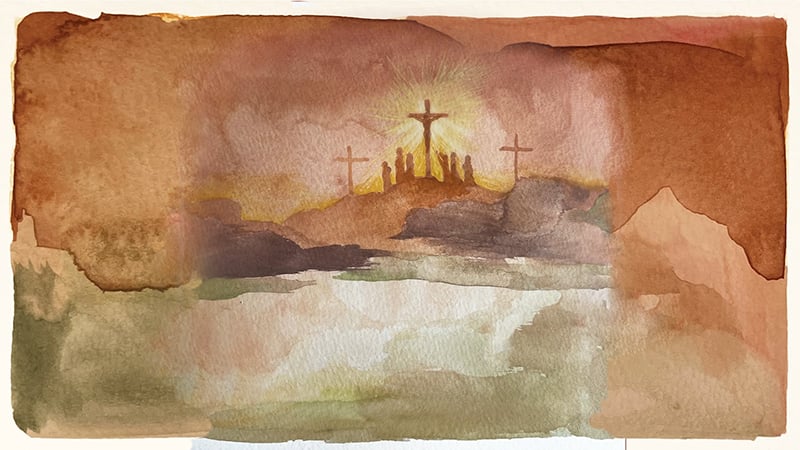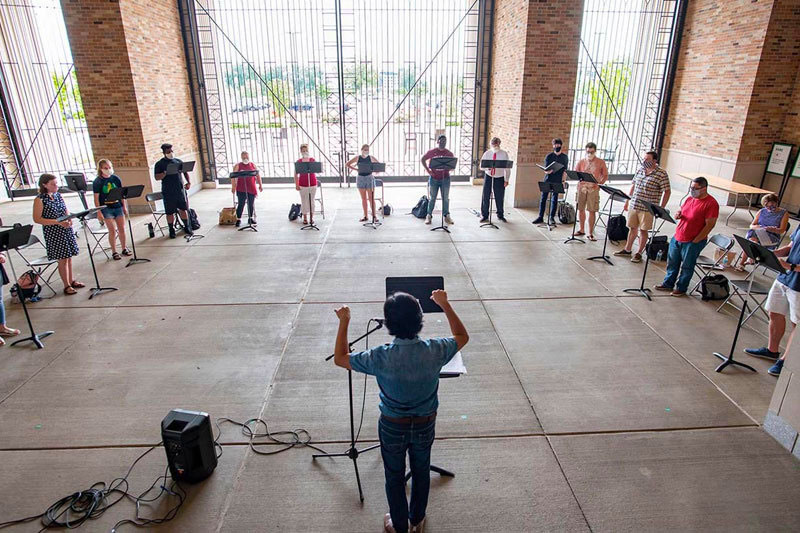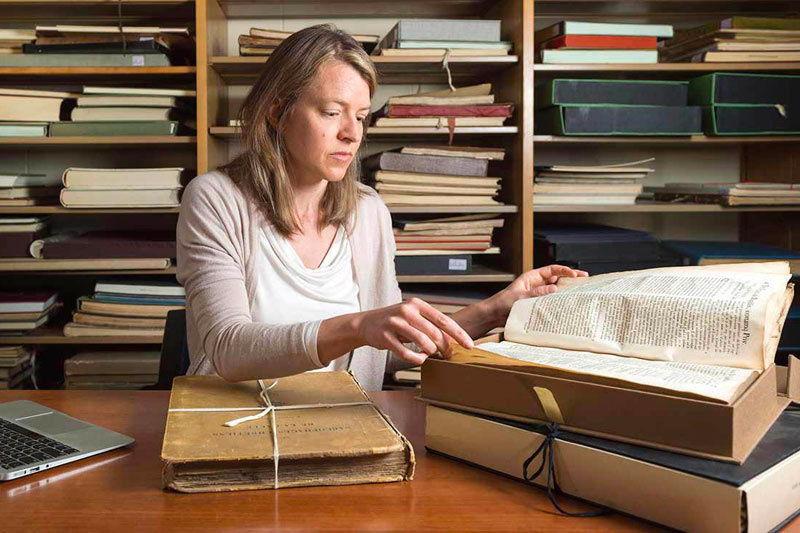Notre Dame Folk Choir invites students to compose original lyrics and music
J.J. Wright wanted to reconceive a project he'd started with the Notre Dame Children's Choir when the annual President's Forum asked the campus to reflect on the clergy sexual abuse crisis.
The project was an original composition of the Passion, the Gospel stories leading up to and including Jesus's crucifixion and burial. Wright immediately saw parallels between the religious story and the sexual abuse crisis, ranging from betrayal and cover-up to an unwillingness to stand up for those who are most vulnerable.
He believed the parallels offered an opportunity for the students he now directs in the Notre Dame Folk Choir—because artistic creation could be a way to work through complex feelings and questions. And it came at an intense moment, in that perplexing period when the COVID-19 pandemic brought the world to a halt and sent college students to isolation at home.
“You can make a melody say something,” Wright said. “These are the conversations that you have when you're learning how to be an artist. How do you translate emotion into something material?”
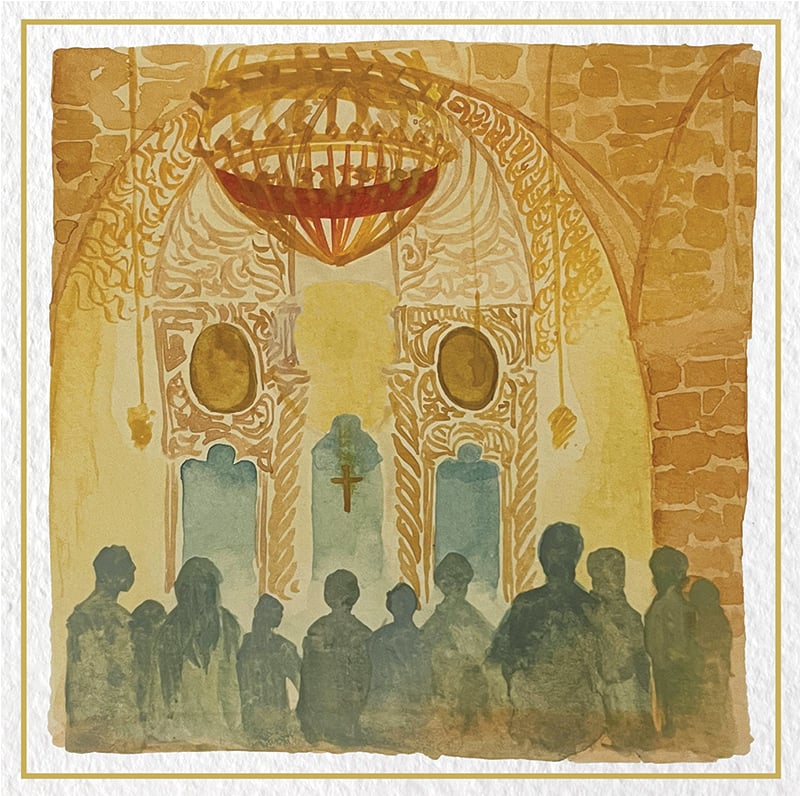
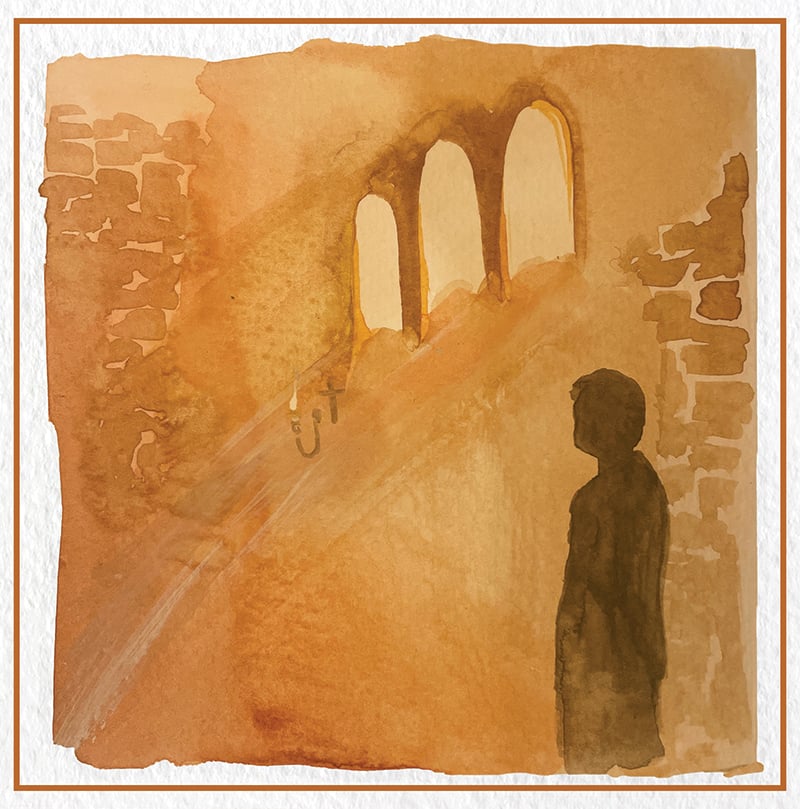
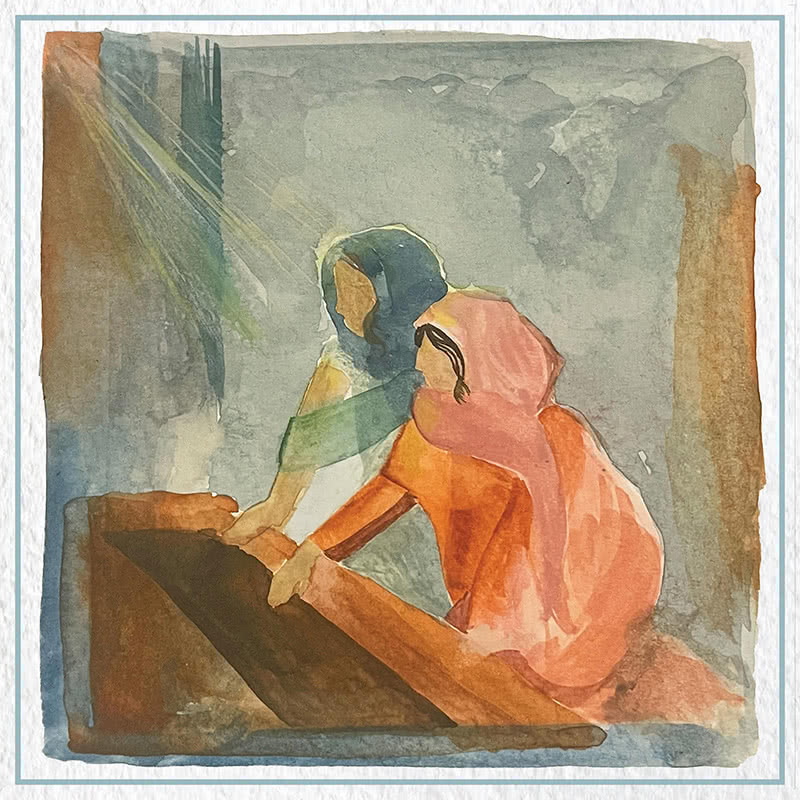
Three years later, those emotions are material in the form of an album released on February 22. Recorded last year during a pilgrimage to the Holy Land to experience the story's setting, the 95-minute original composition was featured on a Folk Choir tour of performing arts centers on the East Coast during Notre Dame's spring break this March.
FaithND used the music as a devotional practice during Lent, releasing themed chunks accompanied by student, staff and faculty reflections. With Easter approaching, a culminating performance of The Passion will take place at 8:30 p.m. on April 7 on the campus South Quad, livestreamed on YouTube and the University's Facebook page.
Wrapping up a major project allowed Wright and the choir to look back at the creative process with the benefit of hindsight. There were plenty of challenges that felt like wandering in the desert before pulling the pieces together in joyful song.
Pilot project
Wright and Tristan Cooley, a poet and writer living in Vermont, decided to prompt the students through a traditional prayer method: Read a scene from Scripture and meditate on any images or words that capture your imagination. The first scene was the apostles praying in the Garden of Gethsemane before Jesus's death.
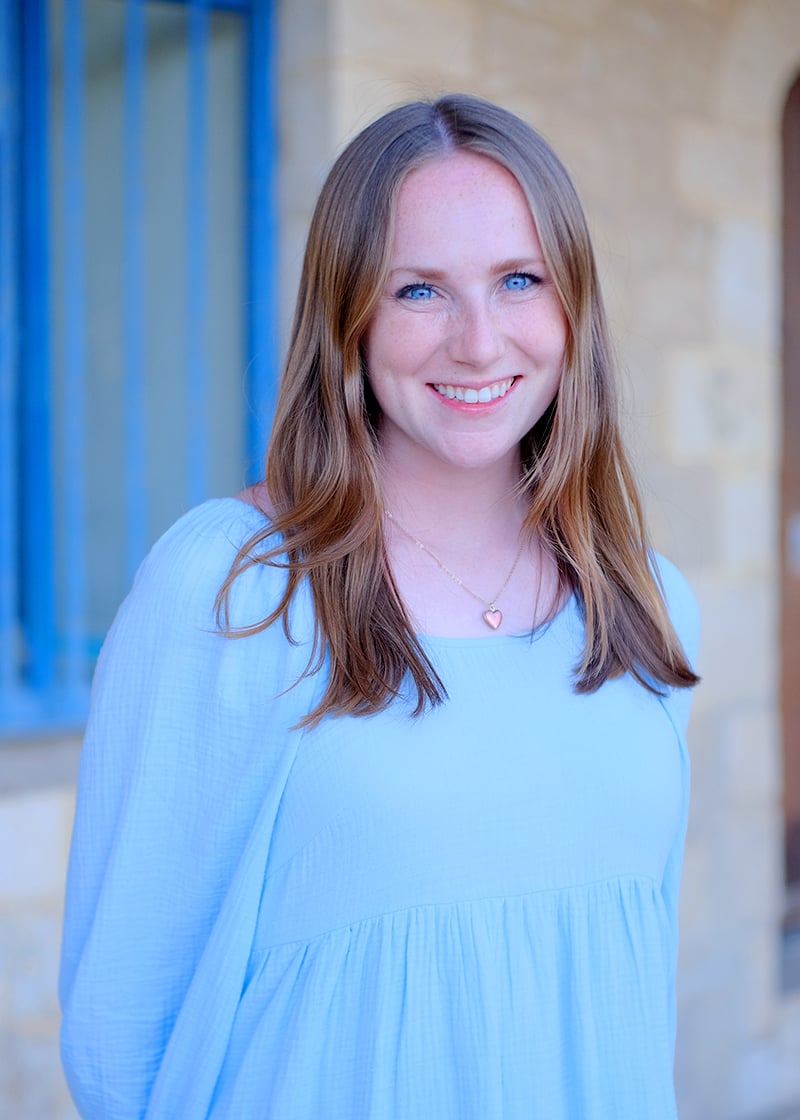
Anna Staud, a choir member and English major and theology minor who liked to write poetry, acted as a pilot project to test the creation method during her sophomore year. She focused on the tenderness and violence of the way in which the apostle Judas betrayed Jesus to his enemies with a kiss.
“It was a different way to express my faith and connect emotionally with the story,” Staud said. “I felt like it was a place where I could creatively question my faith in a way that didn't feel wrong.”
Staud began working with Wright and Cooley on what is called a libretto, or a script of words to be put to music. She was free-writing lines that ended up in the final version: “Could I believe my sight? Could I believe my eyes?” But she wasn't familiar with the technical aspects of writing music, so one day she just started recording.
“I would just sing into my phone, and it's crazy because I sent this audio recording where I just felt the words,” she said. “I was so invested in the words that I was just like, ‘OK, I'm just going to start singing.'That version now is in the final product.”
Staud met regularly with Cooley and Wright to review and revise what she had written in order to shape the lyrics into the libretto. After the method proved successful that summer of 2020, Wright opened up the creation process to more students in the fall semester during a time when the choir couldn't sing together in the Basilica.
“That pilot became the germination of how it translated to larger groups of students,” Wright said. “We would invite students to reflect on the scene, then contribute creatively towards their conception of the scene. They were invited to write poetry, to draw, to write melodies, make chord progressions, anything.”
Seven other choir members joined Staud in a poetry committee, while the whole choir contributed ideas from their own experiences with the Passion through written responses. The tension and anxiety the students felt during the pandemic seemed to mirror that of the apostles in the moments after Jesus's death. In an unusual twist, this moment of uncertainty before the Resurrection is the framing device and imagined setting for the piece.
“Each student or a team of students got assigned to a song, and they worked with me and the librettist to essentially give it flesh,” Wright said. “What's it sound like? What's it feel like? What's the experience like of seeing it? What do you want the audience to feel like when this happens? What are the deeper themes we're trying to communicate?”
Wright then audibled again, deciding the choir should create a full narrative rather than an album of loosely related songs. The poetry writers each focused on specific scenes during the unusual 10-week winter break in early 2021, checking in regularly to keep their work coordinated.
By the spring semester, eight more choir members joined the process of creating songs, making endless revisions and creating a cohesive libretto. The choir could finally practice singing together and staged its first workshop performance to replace the canceled May tour.
“We were trying to find another way to engage our 60 students in the choir in the work of faith formation through our music ministry,” Wright said. “What could the Scripture offer you if you actually create out of the feelings it gives you when you put yourself in that scenario? We ended up with tons of material.”
Wright fit
Wright grew up in Buffalo, New York, in a big Catholic family with six siblings. His father was a small business owner, but his grandfather was a musician and he began piano lessons early. He played in the high school jazz band and went to Indiana University to study music.
After a year, he left college and worked his first professional music job on a cruise ship for six months before joining the Navy, where he spent four years with the Naval Academy Band. While in the Navy, he was nominated for a Grammy Award for best Latin jazz album in 2008 and won the Latin Grammy in the same category.
He met a Saint Mary's College graduate during that enlistment, after which they married and moved to New York City. Wright finished his undergraduate work at the New School there.
Still interested in jazz but also increasingly in church music, he created an internship with the music director at St. Patrick's Cathedral and sometimes directed the choir. All his applications for graduate school were to jazz programs before he visited his in-laws and learned from Notre Dame Magazine about the University's sacred music program. He was hooked.
“So I just threw my hat in the ring, not at all expecting to get in,” he said. “They called me three days after the audition and offered a spot. We decided to come here with our two young kids.”
Wright began a master's degree in sacred music and working with the Children's Choir in 2012, following it up with a doctoral degree that ended with a dissertation in Rome and an internship with the Sistine Chapel Choir. While he was taking classes at the Pontifical Institute of Sacred Music in 2017, Steve Warner, the Folk Choir's longtime director, took a new job at the Newman Centre in Dublin.
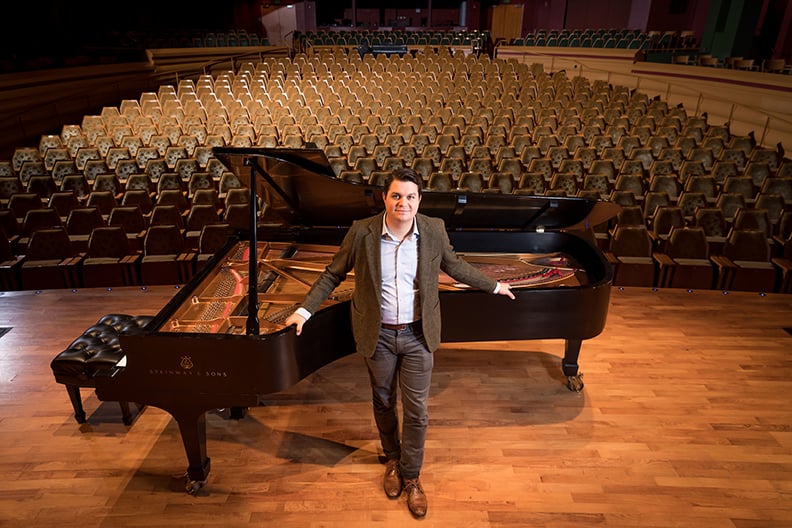
Wright succeeded Warner, who founded the Notre Dame Folk Choir in 1980 as a liturgical group singing at the noon Mass of the Basilica of the Sacred Heart. The 50-person ensemble aims to bring together traditional choral repertoire and contemporary music, with an emphasis on creating new music. It has released eight studio albums and toured widely since the 1980s—to Ireland, Scotland, and England, but also to East Africa, Australia, and throughout the United States.
Wright continued these traditions, with an emphasis on inviting the students to collaborate in the creation process.
“The continual ministry of the Folk Choir was to bridge the gap between sacred and secular music,” Staud said. “We want to break down those barriers so we can have songs that sound more like pop songs that people would want to listen to in their car or with friend – and it can still point to Christ.”
New generation
Because the choir turns over some of its members each year, the process of creating the Passion changed again in the fall of 2021, Staud's senior year. Wright and Cooley decided to change the traditional narrator into a different character called Memory to reflect how working through memories helps people deal with trauma.
“Lots of revisions were happening, so that some parts I had loved from the first version were getting cut and changed,” Staud said. “That was painful.”
Still, she came to understand that a big production must be a collaborative process to get the whole group to buy in. Compared to creating music from scratch in a solo recording booth the first year, choir members now had lyrics and demos they could try out together. The melodies grew out of the written words, guided by Wright and other professional musicians with composing experience.
Meg Beuter, a junior from Nashville, had joined the choir through a video audition recorded before her freshman year, which the pandemic turned upside down. An English and American studies major, she joined the poetry team with Staud and worked on the Crucifixion scene.
“We spent a good amount of time reading and trying to piece together our own vision of what it was like that day,” Beuter said. “We considered a lot of visual components alongside the emotions. There was a lot of conversation about how we all process grief differently.”
In a podcast about the project, Kim Belcher, a theology professor who collaborated as an adviser, said the Passion liturgy naturally evokes a range of emotional responses for different people.
“I think of the analogy of tuning,” she said. “The liturgy tunes our emotional responses so that we can be together even though we all don't feel the same things.”
Librettist Tristan Cooley agreed: “The composition process involved so many people working for such a long period of time, working on different scenes which all have different emotional requirements, or different pitches—in the Crucifixion scene, for example, versus the Last Supper scene.”
In October, the choir had a retreat and performed the first half of The Passion at St. Monica's Church in South Bend. By January 2022, there was a finished project that they toured in churches on the East Coast over spring break.
Final product
On the Monday after graduation, the full Folk Choir headed to the Holy Land for 10 days. The plan was to give the students a tour of the place where the events occurred before recording the performance in a studio.
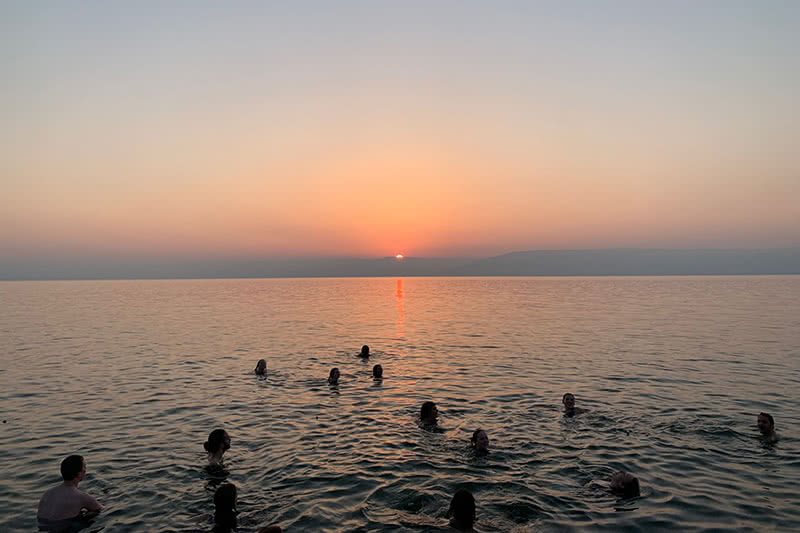
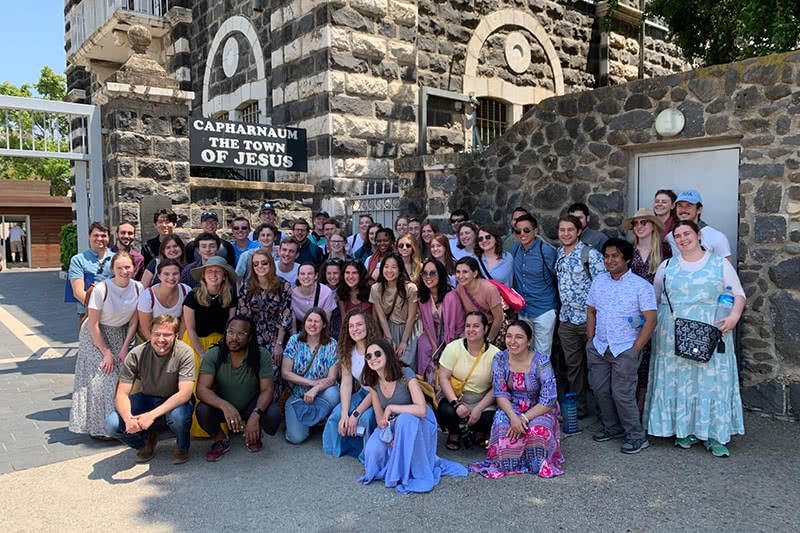
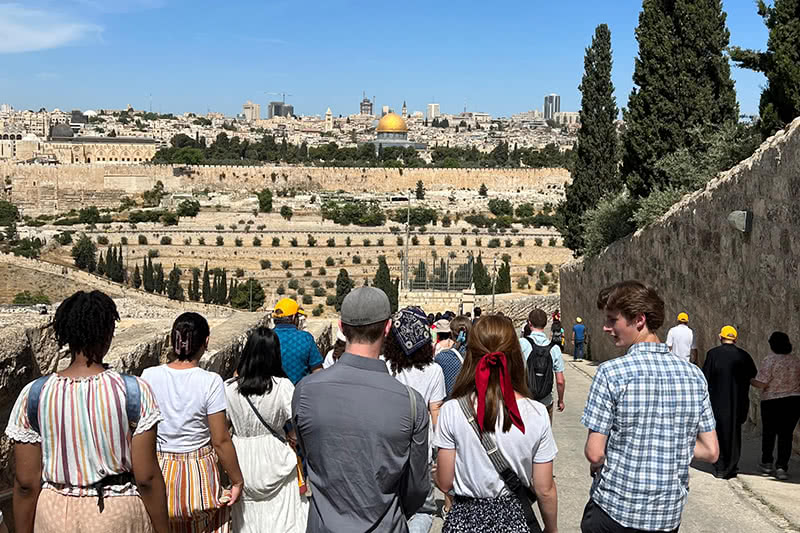
“We actually put ourselves in that environment and then let that be the creative impetus for the music making,” Wright said. “When you walk the Way of the Cross and then go sing about the Crucifixion, you're going to approach it differently than you would if you were here on campus. Not necessarily better or worse, but it's a qualitatively different experience.”
Staud said she had trouble processing the setting until visiting the Church of the Visitation, the site where Jesus's mother, Mary, saw her cousin Elizabeth and said her song of praise, the Magnificat. Wright began singing the original lyrics Staud wrote for the women's song before it became “Bethany.” Staud finally felt the connection: “I lost it—just a really beautiful experience.”
Beuter said seeing the sun rise over the Sea of Galilee was unforgettable, as were the holy sites and churches of Jerusalem.
“I felt like being there humanized these people,” Beuter said. “Here is where we think that Jesus washed his hands. There's where we think Mary Magdalene lived. It just grounded us more in taking on the voices of these real people.”
The recording studio was a new experience for most of the students that involved a learning curve and multiple takes. Wright and the choir were joined by guitarist Franky Rousseau and bassist Ike Sturm, and the album was produced by three-time Grammy winner Joe Henry and recorded at the Jerusalem Music Center. Marie Latham ‘22, in collaboration with Notre Dame Creative, created the album's original artwork from watercolors based on photos taken during the tour.
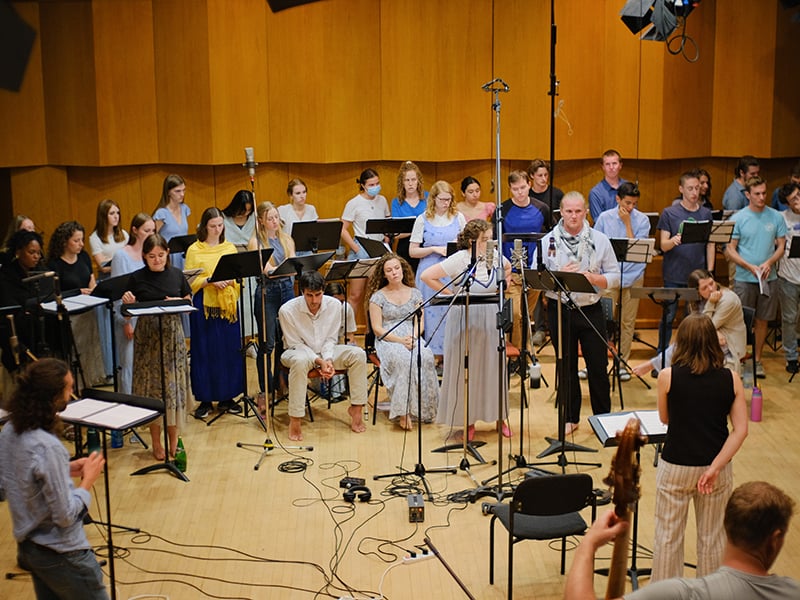
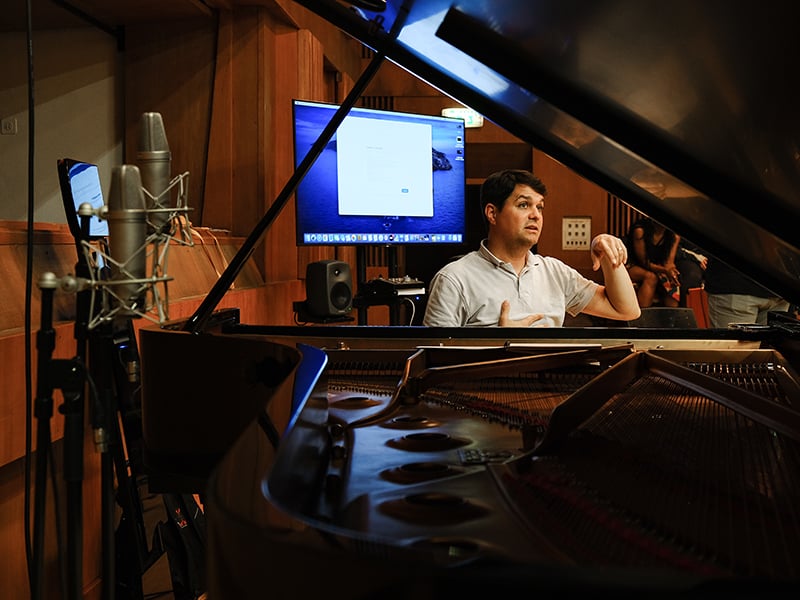
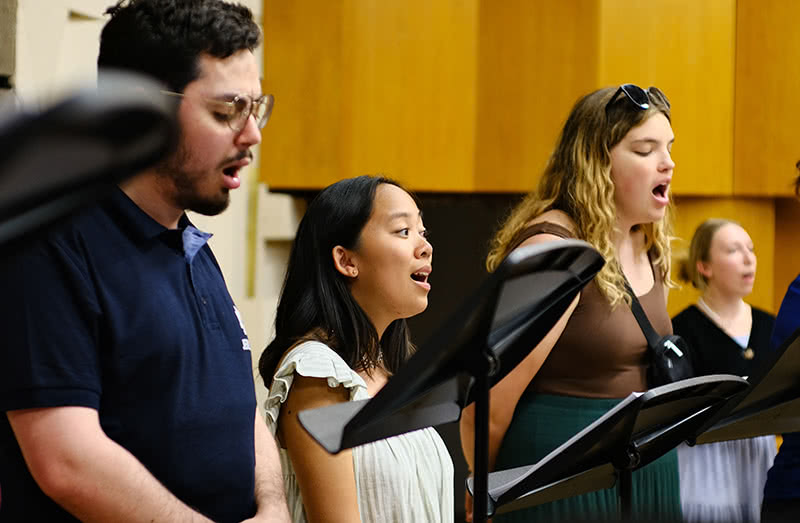
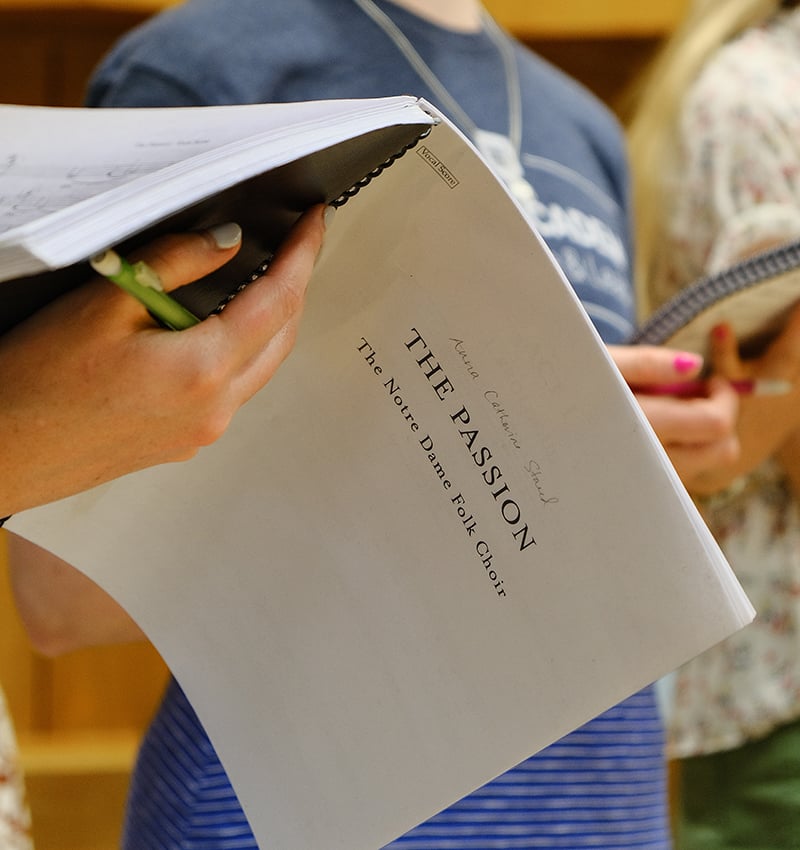
The spring break tour was a fully staged production, directed by FTT professor Matt Hawkins, Notre Dame's director of musical theater. Beuter said the tour was the first time her family got to see the performance, including her grandparents at a Florida performance and her sister and parents in Washington, D.C.
The culminating performance will occur at Notre Dame on Good Friday. As the disciples gather to retell their story of Christ's Passion, they struggle to answer one character's question: “Can grace abound in grounds turned fallow?” The answer sung by the Folk Choir is full and affirmative.
“When I try to create an artwork like this, I want it to change me,” Wright said. “Song and music allow us to become co-creators, to learn words and melodies and sing them with other people. We try to form ourselves into something more holy and sacred. We see all the ways we fall short and yet are redeemed through the Resurrection.”
